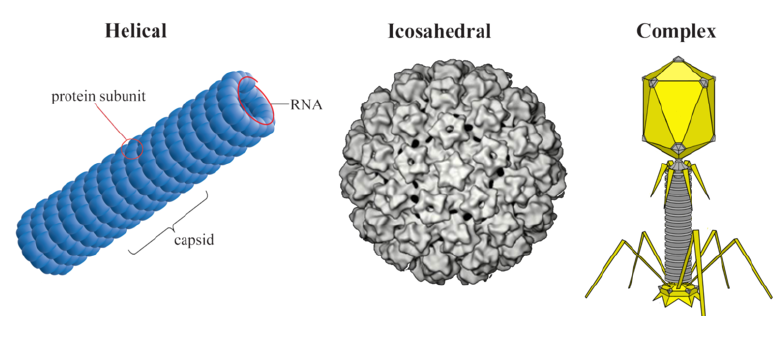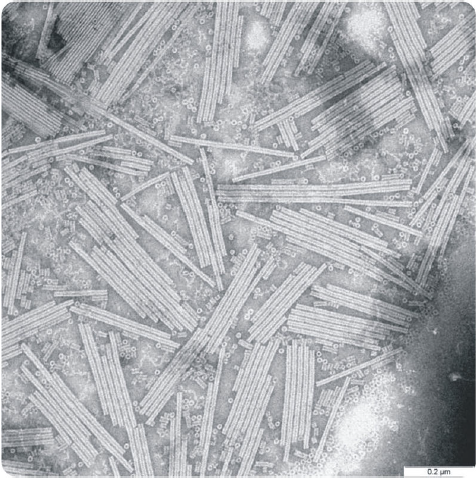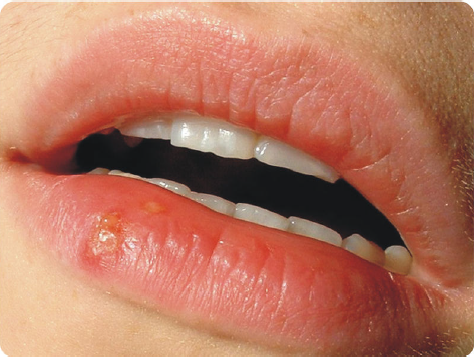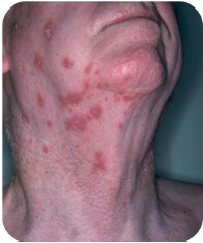Reading: Viruses
• Describe the structure of viruses.
• Outline the discovery and origins of viruses.
• Explain how viruses replicate.
• Explain how viruses cause human disease.
• Describe how viruses can be controlled.
• Identify how viruses are used in research and medicine.
Vocabulary
Characteristics of Viruses
An individual virus is called a virion. It is a tiny particle much smaller than a prokaryotic cell. Because viruses do not consist of cells, they also lack cell membranes, cytoplasm, ribosomes, and other cell organelles. Without these structures, they are unable to make proteins or even reproduce on their own. Instead, they must depend on a host cell to synthesize their proteins and to make copies of themselves. Viruses infect and live inside the cells of living organisms. When viruses infect the cells of their host, they may cause disease. For example, viruses cause AIDS, influenza (flu), chicken pox, and the common cold.
Although viruses are not classified as living things, they share two important traits with living things. They have genetic material, and they can evolve. This is why the classification of viruses has been controversial. It calls into question just what it means to be alive. What do you think? How would you classify viruses?
Structure and Classification of Viruses
Viruses vary in their structure. The structure of a virus is one trait that determines how it is classified.Structure of Viruses
A virus particle consists of DNA or RNA within a protective protein coat called a capsid. The shape of the capsid may vary from one type of virus to another, as shown in Figure 1.1.
Some viruses have an envelope of phospholipids and proteins. The envelope is made from portions of the host’s cell membrane. It surrounds the capsid and helps protect the virus from the host’s immune system. The envelope may also have receptor molecules that can bind with host cells. They make it easier for the virus to infect the cells.

FIGURE 1.1
Capsid Shapes in Viruses. Three shapes of viral capsids are shown here. They are helical (spiral), icosahedral (20-sided), and complex. Viruses with complex shapes may have extra structures such as protein tails.
Classification of Viruses
Viruses are classified on the basis of several traits. For example, they may be classified by capsid shape, presence or absence of an envelope, and type of nucleic acid. Most systems of classifying viruses identify at least 20 virus families. Table 1.1 shows four examples of virus families and their traits. Have any of these viruses made you sick?TABLE 1.1: Virus Classification: Four Examples
| Virus Family | Capsid Shape | Envelope Present? | Type of Nucleic Acid | Disease Caused by a Virus in this Family |
|---|---|---|---|---|
| Adenovirus | icosahedral | no | DNA | acute respiratory disease |
| Herpesviruses | icosahedral | yes | DNA | chicken pox |
| Orthomyxoviruses |
helical | yes | RNA | influenza |
| Coronaviruses | complex | yes | RNA | common cold |
Discovery and Origin of Viruses
Viruses are so small that they can be seen only with an electron microscope. Before electron microscopes were invented, scientists knew viruses must exist. How did they know? They had demonstrated that particles smaller than bacteria cause disease.Discovery of Viruses
Researchers used special filters to remove bacteria from tissues that were infected. If bacteria were causing the infection, the filtered tissues should no longer be able to make other organisms sick. However, the filtered tissues remained infective. This meant that something even smaller than bacteria was causing the infection.
Scientists did not actually see viruses for the first time until the 1930s. That’s when the electron microscope was invented. The virus shown in Figure 1.2 was the first one to be seen.

FIGURE 1.2
Tobacco Mosaic Virus. This tobacco mosaic virus was the first virus to be discovered. It was first seen with an electron microscope in 1935.
In either case, the newly made viral proteins assemble to form new virions. The virions may then direct the production of an enzyme that breaks down the host cell wall. This allows the virions to burst out of the cell. The host cell is destroyed in the process. The newly released virus particles are free to infect other cells of the host.
Viruses and Human Disease
Viruses cause many human diseases. In addition to the diseases mentioned above, viruses cause rabies, measles, diarrheal diseases, hepatitis, polio, and cold sores (see Figure 1.3). Viral diseases range from mild to fatal. One way viruses cause disease is by causing host cells to burst open and die. Viruses may also cause disease without killing host cells. They may cause illness by disrupting homeostasis in host cells.
Some viruses live in a dormant state inside the body. This is called latency. For example, the virus that causes chicken pox may infect a young child and cause the short-term disease chicken pox. Then the virus may remain latent in nerve cells within the body for decades. The virus may re-emerge later in life as the disease called shingles. In shingles, the virus causes painful skin rashes with blisters (see Figure 1.4).
Some viruses can cause cancer. For example, human papillomavirus (HPV) causes cancer of the cervix in females. Hepatitis B virus causes cancer of the liver. A viral cancer is likely to develop only after a person has been infected with a virus for many years.
Control of Viruses
Viral diseases can be difficult to treat. They live inside the cells of their host, so it is hard to destroy them without killing host cells. Antibiotics also have no effect on viruses. Antiviral drugs are available, but only for a limited number of viruses. Many viral diseases can be prevented by giving people vaccines (see Figure 1.5). A vaccine is a substance that contains pathogens such as viruses. The pathogens have been changed in some way so they no longer cause disease.

FIGURE 1.3
Cold Sore. Cold sores are caused by a herpes virus.

FIGURE 1.4
Shingles. Shingles is a disease caused by the same virus that causes chicken pox.
However, they can still provoke a response from the host’s immune system. This results in immunity, or the ability to resist the pathogen. Vaccines have been produced for the viruses that cause measles, chicken pox, mumps, polio, and several other diseases.

FIGURE 1.5
Vaccination. A child receives a vaccine to prevent a viral disease. How does the vaccine prevent the disease?
Viruses in Research and Medicine
Viruses are important tools in scientific research and medicine. Viral research has increased our understanding of fundamental biological processes involving DNA, RNA, and proteins. Viruses that infect cancer cells are being studied for their use in cancer treatment. Viruses are also being used in gene therapy to treat genetic disorders, as explained in Figure 1.6.

FIGURE 1.6
Using a Virus in Gene Therapy. A normal human gene is inserted into a virus. The virus carries the gene into a human host cell. The gene enters the nucleus and becomes part of the DNA. The normal gene can then be used to make normal proteins. It can also be copied and passed to daughter cells in the host.
Lesson Summary
• Viruses are tiny particles, smaller than prokaryotic cells. They are not cells and cannot replicate without help, but they have nucleic acids and can evolve.
• Viruses can be classified on the basis of capsid shape, presence or absence of an envelope, and type of nucleic acid.
• Viruses were assumed to exist before they were first seen with an electron microscope in the 1930s. Multiple hypotheses for viral origins have been proposed.
• After infecting a host cell, a virus uses the cell’s machinery and metabolism to produce new copies of itself.
• Viruses cause many human diseases by killing host cells or disturbing their homeostasis. Viruses are not affected by antibiotics. Several viral diseases can be treated with antiviral drugs or prevented with vaccines.
• Viruses are useful tools in scientific research and medicine. Viruses help us understand molecular biology. They are also used in gene therapy.
Lesson Review Questions
Recall
1. How do viruses differ from living things? How are they similar to living things?2. Describe variation in capsid shape in viruses.
3. State two hypotheses for the origin of viruses.
4. Describe how viruses replicate.
5. How do viruses cause human disease?
